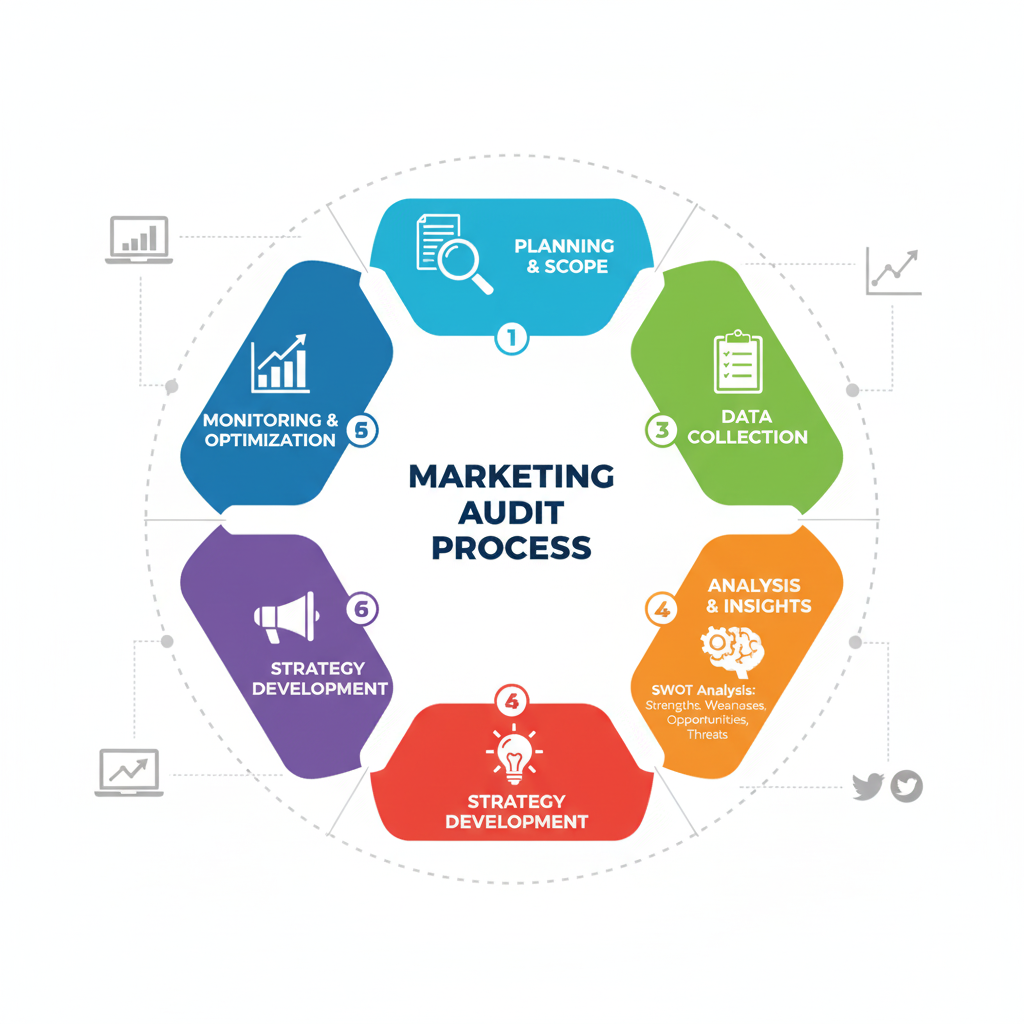Step 2: Collect Internal Data
Gather data on product sales, customer feedback, and warranty or service records. This provides insights into whether your product specifications align with customer expectations. For example, are customers using your product in the way you intended, or are they finding alternative uses? These patterns can inspire adjustments in product messaging or even product design.
Step 3: Evaluate the External Environment
Analyze how your product performs against competitors. Consider factors such as:
- How competitors highlight their product features.
- Which product benefits customers value most in your industry.
- Shifts in consumer preferences that might require new product specifications.
This helps you identify gaps where your product can stand out.
Step 4: Assess the Marketing Mix with Product Focus
The 4Ps (Product, Price, Place, Promotion) are critical in the marketing audit process, with “Product” being the foundation. Ask questions such as:
- Does the product solve customer pain points effectively?
- Are its specifications superior or unique compared to competitors?
- Are product instructions, packaging, and usage guidance clear?
- Is the product positioned in channels where customers expect to find it?
This ensures your product strategy aligns with customer expectations.
Step 5: Conduct a SWOT Analysis
Build a product-centered SWOT analysis:
- Strengths: What product features make your offering unique?
- Weaknesses: Are there usability issues or unmet customer needs?
- Opportunities: Are there new uses for your product that could open new markets?
- Threats: Are competitors offering similar products with better specifications?
Step 6: Recommend and Implement Strategies
From your findings, create actionable steps. This could mean highlighting underused product features in campaigns, adjusting packaging for clarity, or showcasing customer testimonials that emphasize real-world product use. Implementation should directly connect marketing to product strengths.
Step 7: Monitor and Review Progress
Regularly track product performance metrics such as customer satisfaction, product return rates, or feature adoption. If customers aren’t using certain features, it may indicate a need for clearer communication in your marketing or updates to product design.
Why the Marketing Audit Process Matters for Products
By focusing on product specifications and usage, the marketing audit process ensures your strategy is customer-centric. It bridges the gap between product design and marketing execution, helping businesses highlight the right features and improve user experience.
Final Thoughts
The marketing audit process gives businesses the clarity to market their products more effectively, ensuring product specifications and customer use are always at the center of strategy. For companies looking to refine both product positioning and branding, expert guidance can make a big difference. Cardan Marketing Solutions specializes in helping businesses conduct thorough audits, refine product-focused strategies, and build stronger connections with their target markets.

